- NEED HELP? CALL US NOW
- +919995411505
- [email protected]
Anchorage in Orthodontics
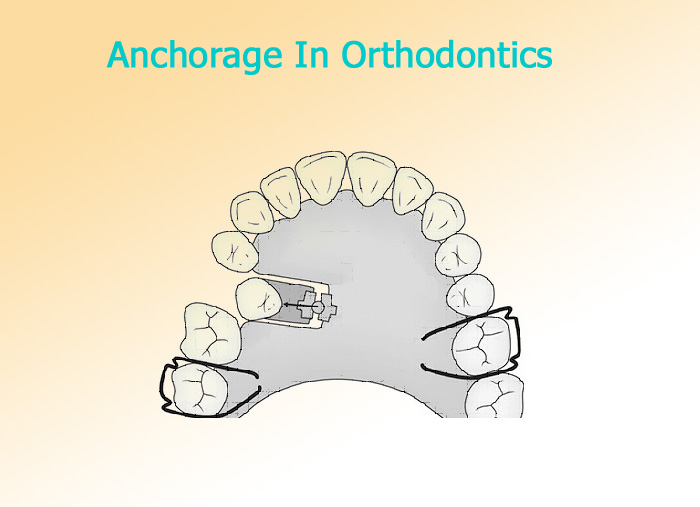
The resistance that the anchorage area offer to these unwanted tooth movements is called anchorage.


CLASSIFICATION OF ANCHORAGE:
- ACCORDING TO MANNEROF FORCE APPLICATION
- SIMPLE
- STATIONARY
- RECIPROCAL
- ACCORDING TO JAWS INVOLVED
- INTERMAXILLARY
- INTRA MAXILLARY
- ACCORDING TO SITE
- INTRA ORAL
- EXRAORAL
- MUSCULAR
- ACCORDING TO NUMBER OF ANCHORAGE UNITS
- SINGLE OR PRIMARY
- COMPOUND
- MULTIPLE OR REINFORCED
Simple anchorage:
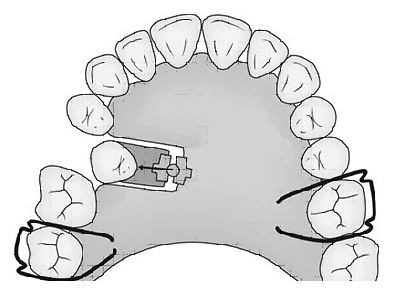
Simple anchorage is obtained by engaging with the appliance a greater number of teeth than are to be moved within the same dental arch. The combined root surface area of the teeth forming the anchorage unit must be double that of the teeth to be moved.
Stationary anchorage: It is defined as dental anchorage in which the manner and application of force tends to displace the anchorage unit bodily in the plane of space in which the force is being applied. The anchorage provided by a tooth resisting bodily movement is considerably greater than one resisting tipping force.
Reciprocal anchorage: The term generally refers to the resistance offered by two malposed units when the dissipation of equal and opposite forces tend to move each units towards a more normal occlusion
Eg: *Closure of a midline diastema by moving the 2 central incisors towards each other
*Use of crossbite elastics and dental arch expansions
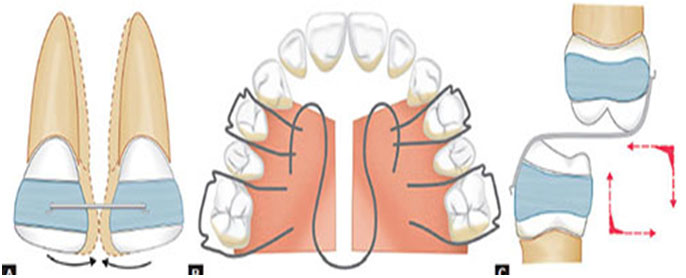
Intraoral anchorage: The teeth to be moved and the anatomic areas that offer anchorage are all within the oral cavity. Various intraoral anatomic units that maybe employed are the teeth, palate and lingual alveolar bone of mandible.
Extraoral anchorage: Anchorage in which the resistance units are situated outside the oral cavity is termed extraoral anchorage. Various extraoral anatomic units used as sites of resistance are occiput, back of the neck , cranium and face.
Eg: Head gears and facemask
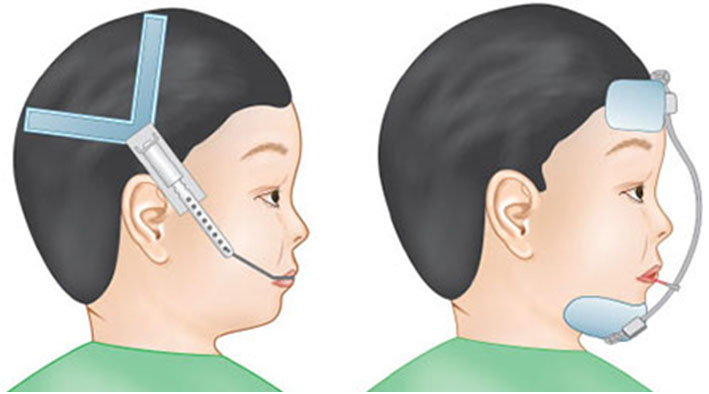
Muscular anchorage:.Muscular anchorage makes use of forces generated by muscles to aid in the movement of teeth. Eg: lip bumper to distalize molars
Intramaxillary anchorage: When all the units offering resistance are situated within the same jaw the anchorage is described as intramaxillary.
Intermaxillary anchorage:
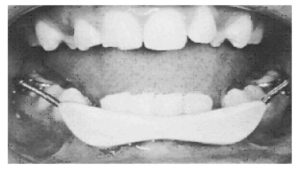 Anchorage in which the resistance units situated in one jaw are used to effect tooth movement in the opening jaw is called intermaxillary anchorage. It is also termed as Baker's anchorage.
Anchorage in which the resistance units situated in one jaw are used to effect tooth movement in the opening jaw is called intermaxillary anchorage. It is also termed as Baker's anchorage.
Eg: Class II elastic traction and Class III elastic traction.
Single or primary anchorage: Single tooth with greater alveolar supportis usedto move another tooth with lesser support is refered to as single or primary anchorage.
Compound anchorage: Anchorage where the resistance provided by more than one toothwith greater support is used to move teeth with lesser support is called compound anchorage.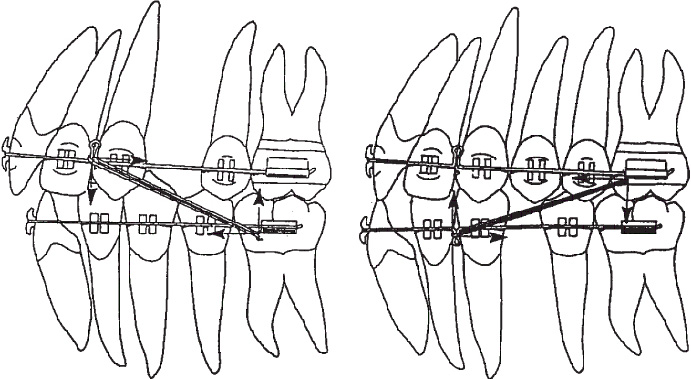

Simple anchorage is obtained by engaging with the appliance a greater number of teeth than are to be moved within the same dental arch. The combined root surface area of the teeth forming the anchorage unit must be double that of the teeth to be moved.
Stationary anchorage: It is defined as dental anchorage in which the manner and application of force tends to displace the anchorage unit bodily in the plane of space in which the force is being applied. The anchorage provided by a tooth resisting bodily movement is considerably greater than one resisting tipping force.
Reciprocal anchorage: The term generally refers to the resistance offered by two malposed units when the dissipation of equal and opposite forces tend to move each units towards a more normal occlusion
Eg: *Closure of a midline diastema by moving the 2 central incisors towards each other
*Use of crossbite elastics and dental arch expansions

Intraoral anchorage: The teeth to be moved and the anatomic areas that offer anchorage are all within the oral cavity. Various intraoral anatomic units that maybe employed are the teeth, palate and lingual alveolar bone of mandible.
Extraoral anchorage: Anchorage in which the resistance units are situated outside the oral cavity is termed extraoral anchorage. Various extraoral anatomic units used as sites of resistance are occiput, back of the neck , cranium and face.
Eg: Head gears and facemask

Muscular anchorage:.Muscular anchorage makes use of forces generated by muscles to aid in the movement of teeth. Eg: lip bumper to distalize molars
Intramaxillary anchorage: When all the units offering resistance are situated within the same jaw the anchorage is described as intramaxillary.
Intermaxillary anchorage:
 Anchorage in which the resistance units situated in one jaw are used to effect tooth movement in the opening jaw is called intermaxillary anchorage. It is also termed as Baker's anchorage.
Anchorage in which the resistance units situated in one jaw are used to effect tooth movement in the opening jaw is called intermaxillary anchorage. It is also termed as Baker's anchorage.
Eg: Class II elastic traction and Class III elastic traction.
Single or primary anchorage: Single tooth with greater alveolar supportis usedto move another tooth with lesser support is refered to as single or primary anchorage.
Compound anchorage: Anchorage where the resistance provided by more than one toothwith greater support is used to move teeth with lesser support is called compound anchorage.

Reinforced / multiple anchorage: Anchorage in which more than one type of resistance unit is utilized is termed reinforced anchorage.
Eg: * Extraoral forces to augment anchorage
* Upper anterior inclined plane
* Transpalatal arch
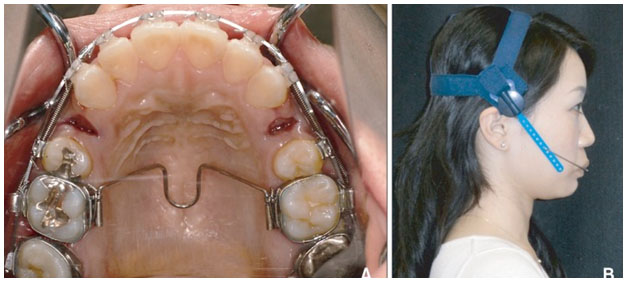
Eg: * Extraoral forces to augment anchorage
* Upper anterior inclined plane
* Transpalatal arch

Related posts
April 10, 2025
April 9, 2025
April 4, 2025




